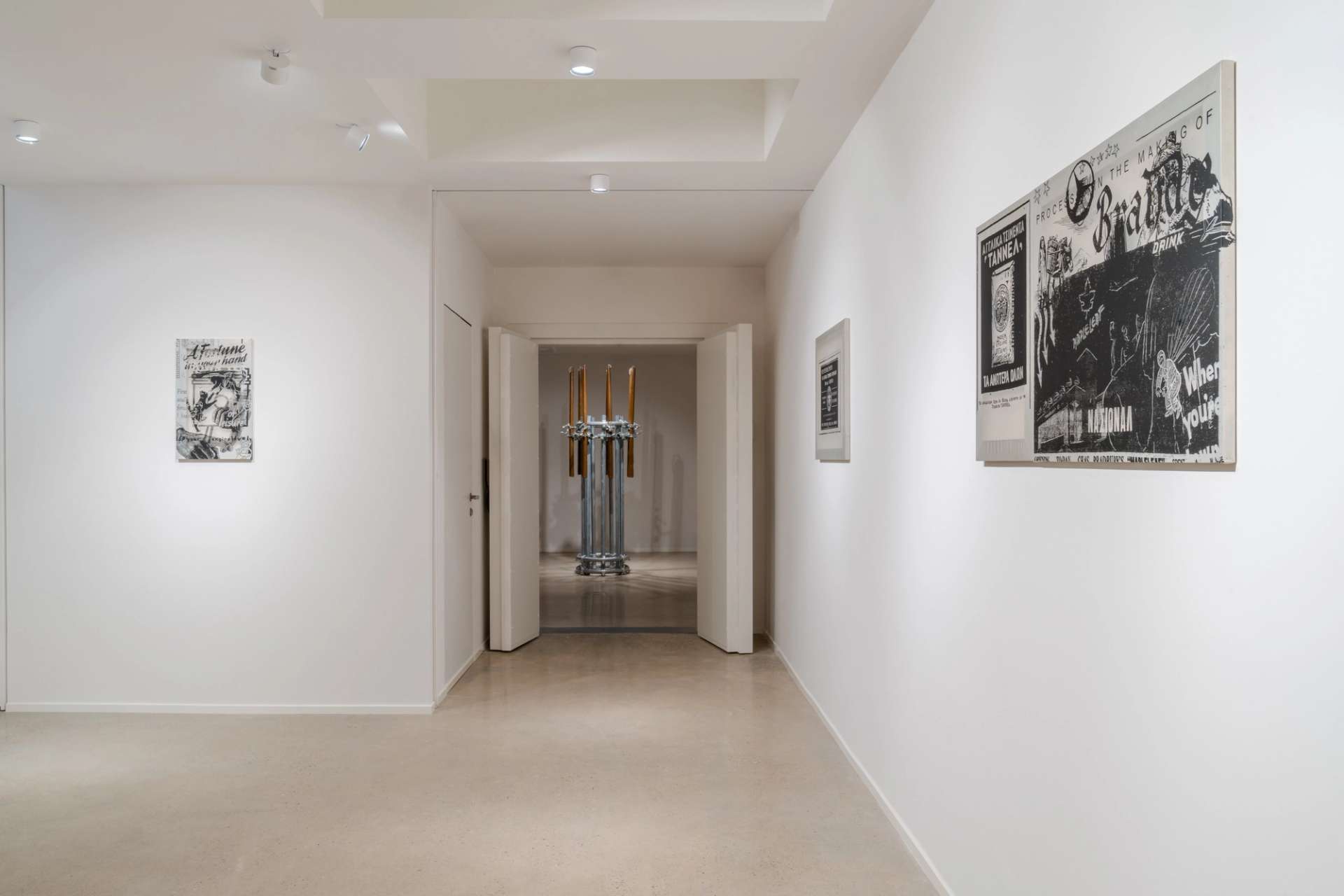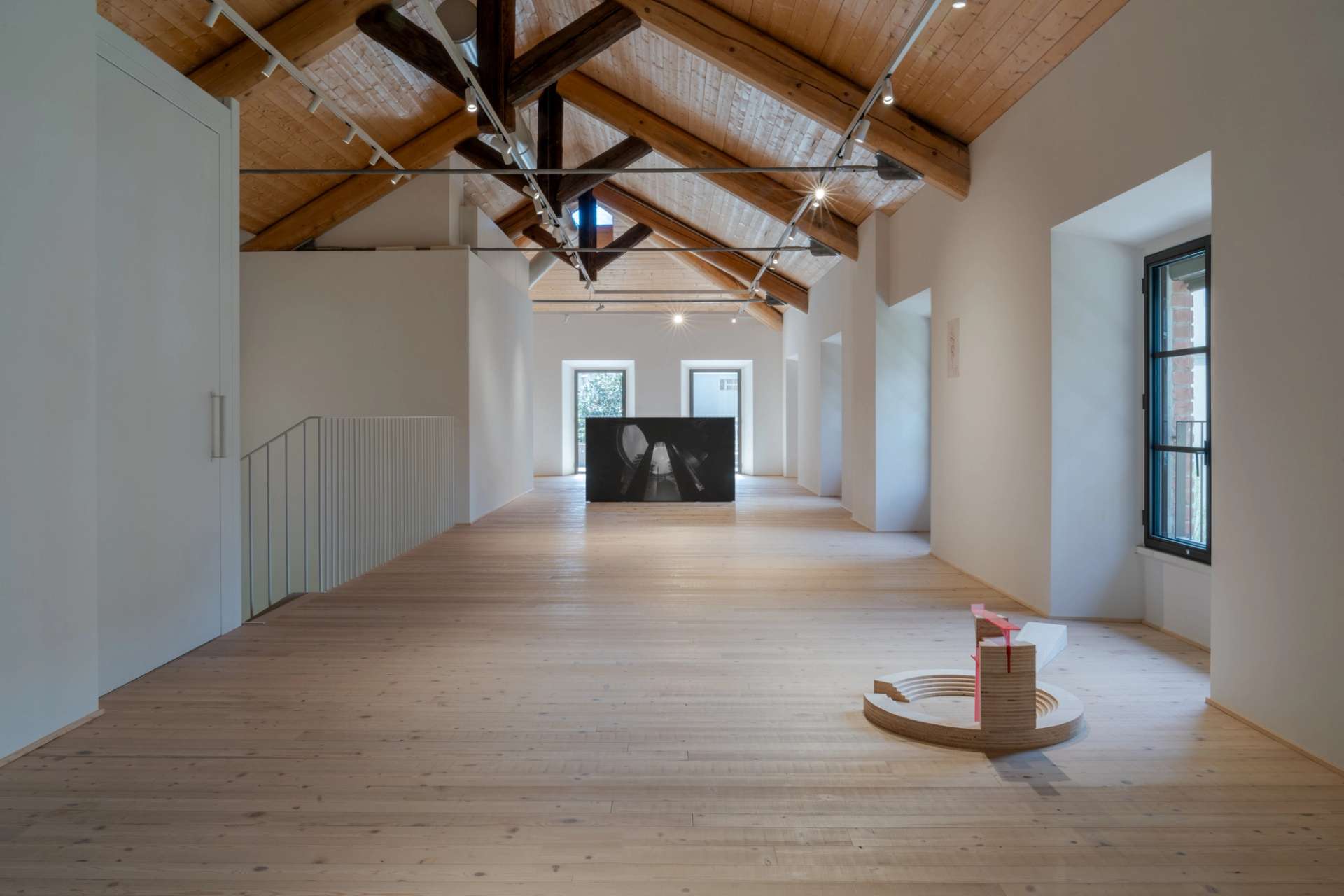to July 7th, 2024
Fondazione Elpis, via Lamarmora 26, Milano
to July 7th, 2024
Fondazione Elpis, via Lamarmora 26, Milano
From 10 April to 7 July 2024, Fondazione Elpis presents Theodoulos Polyviou's solo exhibition, Un Palazzo in esilio (A Palace in Exile).
Un Palazzo in esilio (A Palace in exile) is the third chapter of Transmundane Economies, an ongoing project by Theodoulos Polyviou that examines the concept of “oikonomia” - traditionally understood in theological discourse as ‘household management’ - and deploys virtuality and associated technologies to study, reconstruct and fill voids in Cypriot cultural heritage. Avoiding a nationalist agenda to speculate instead on the relationship between queerness, repair, and reinvention within the historical entanglements of the island. It investigates how complex configurations formed between material culture and new and immersive technologies, such as augmented reality, virtual reality, artificial intelligence and machine learning, can generate new information and experiences, and renegotiate existing systems of value against the backdrop of shifting political, technological, and spiritual conditions.
In the 1950s, a decade characterized by conflicts driven by ethnic and nationalistic tensions in Cyprus, Archbishop Makarios III initiated the construction of a new Archbishopric building in Cyprus, hosting the first-ever architectural competition in the region. The competition and the ensuing debate in the press regarding the proposals underscored the role of architecture in shaping national identity in British-ruled Cyprus. Setting a precedent that would influence future architectural developments on the island, the construction of the new building marked the emergence of a “neo-meta-Byzantine” architectural style in the Cypriot landscape.
On the ground floor of the Foundation, a selection of molds from the artist’s archive marks the starting point of the exhibition.
Originally sourced from the now-defunct Koromias factory in Nicosia, the molds had previously been utilized in the construction of not only the Archbishop’s Palace but also several other churches across Cyprus. In the exhibition, the molds transcend their historical and archival status, emerging as standalone sculptures and serving as dogmatic negatives.
A series of collages, created by screen printing advertisements from 1950s Greek, British, and local newspapers onto construction materials and stretched on aluminum frames, demonstrates the conflicting forces tugging at Cyprus’s identity at the time and underlines the broader relationship between colonial power and media communication.
On the first floor, Theodoulos Polyviou presents an imaginary entry to the 1950’s competition in the form of a video installation produced in collaboration with architect Loukis Menelaou. Their proposal draws upon the teachings and drawings of Daskalos, a Cypriot healer active from the 1950s to the 1990s to inform their design. Similarly to the screen prints in the basement, the film’s script is pieced together through a textual collage composed of excerpts from articles from the same newspapers.
The animated film imagines the evening of the 28th of February 1959 just hours before the return of Archbishop Makarios III to Cyprus to a jubilant reception in Nicosia after being in exile. The film serves as a dialogue between the real and speculative histories surrounding the competition and examines the ways in which mechanisms of inclusion and exclusion within the construction of the palace and the symbolism of its design fostered a sense of community and belonging for some, while marginalizing Cypriot minority groups.
The film is accompanied by an architectural model carved out of repurposed wood from the ceiling of the building hosting Fondazione Elpis as well as architectural drawings related to the fictional submission by Polyviou and Menelaou.
Throughout the exhibition space, visitors encounter further objects that can also be seen in the film. Among these items is a candle holder constructed from scaffolding materials, designed to hold ecclesiastical candle votives.
These votives are produced by a workshop located directly across from the current Archbishop’s Palace in Nicosia. Another piece is a Σαρκά, a broom hand-crafted from dried bundles of native Cypriot spiny shrubs, which was historically used by cleaning staff employed by municipalities during British rule. In the exhibition, the broom is connected to a motor and programmed
to tap the floor of the basement, causing it to gradually shed its leaves over
the course of the show.
Un Palazzo in esilio, set within the context of Transmundane Economies, examines the concept of ‘oikonomia’ and its extension to the Church of Cyprus’s influence over both spiritual directives and the governance and stewardship of mundane material economic and political interests. As such, it reveals the Church’s impact on wider societal issues, including nationalism and identity politics, and offers a new perspective for contemplating notions of place, history, and cultural or collective identity.
With the support of The Ministry of Culture of The Republic of Cyprus.




